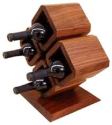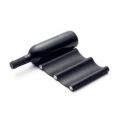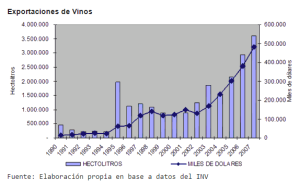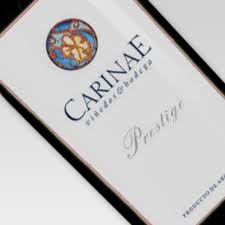 Sparkling wine is getting more and more popular all over the world. It is far from being just a wine to celebrate New Years Eve or birthdays. Having a glass of sparkling on Tuesday night watching TV is OK as well and nobody should give you a weird look 🙂
Sparkling wine is getting more and more popular all over the world. It is far from being just a wine to celebrate New Years Eve or birthdays. Having a glass of sparkling on Tuesday night watching TV is OK as well and nobody should give you a weird look 🙂
That phenomenon can be felt strongly in Argentina. Within a decade the industry went from having almost no sparkling wines to every “serious” winery having their own sparkling wine. For example in comparison to 2003 the sparkling wine production grew 160% by 2013, the production was as high as around 55 million bottles per year.
Like in the rest of the world also in Argentina the sparkling wine consumers is younger generation, people who are not afraid to try new things plus when going out in Argentina you may notice that in every night club they offer sparkling wine, also in most of the restaurants.
Crisis, that made Argentine inflation as high as 30-40% per year has had it effect on the wine production, but luckily exporting is helping to keep the businesses going and the local wine consumption is still high.
 The methods used to make sparkling wine are:
The methods used to make sparkling wine are:
- The easiest and the cheapest – gas injection. Those wines are like alcoholic sodas, gas is being injected to the wine, bubbles are big and going everywhere. Gas injection will dehydrate the body fast and because of that is more likely to cause a headache the day after. This method is used to make low quality and inexpensive sparkling wines.
- Charmat method sparkling wines are created by doing secondary fermentation in pressured steal tanks and then the wine is bottled under pressure so the bubbles stay inside the wine. Even though this method is less expensive and allows bigger production than Champenoise it is used to make fine quality wine. Wines are very fruity and the fresher the better, not to be aged because it looses it fruity characteristics.
- Champenoise method is most famous for being used to make Champagne in France. Second fermentation is done inside the bottle, so this method takes more time and money. The wine should ferment in the bottle for at least 15 months before selling it but often wine makers leave it ferment for 3-6 years.
- Transfer method is a mix of Charmat and Champenoise, secondary fermentation is done inside the bottle but then the wine is poured out from the bottles to a stainless steal tanks and bottled again. This is useful to have all the bottles the same quality. In Champenoise method the taste may vary but like this an equal level is created.
You can find 5 different style of sparkling wines in Argentina:
- Nature/ Brut Nature – dry wine, less than 3 grams of sugar per liter
- Extra Brut – dry wine, less than 6 grams of sugar per liter
- Brut – dry wine, less than 15 grams of sugar per liter
- Demi-Sec – medium dry sweeter wine, 33-50 grams of sugar per liter
- Dulce – sweet wine, more than 50 grams of sugar per liter
In 2013 most produced Argentine sparkling wines were:
- Extra Brut – 28.6 millions of liters
- Dulce – 3 millions liters
- Demi-Sec – 2,6 millions liters
- Brut – 2.4 millions liters
- Nature/ Brut Nature – 2 millions liter
Almost 4 million liters from that was exported. That is a great amount for Argentina and even though Argentine red wine is more common it is important that Argentine sparkling wine is reaching foreign markets and growing popularity.







































































 Typical drink to go with all that food is light beer, white and red wine and soda. My personal favorite with picada is Bonarda, good Malbec and Syrah aged in oak. One amazing option is
Typical drink to go with all that food is light beer, white and red wine and soda. My personal favorite with picada is Bonarda, good Malbec and Syrah aged in oak. One amazing option is 




